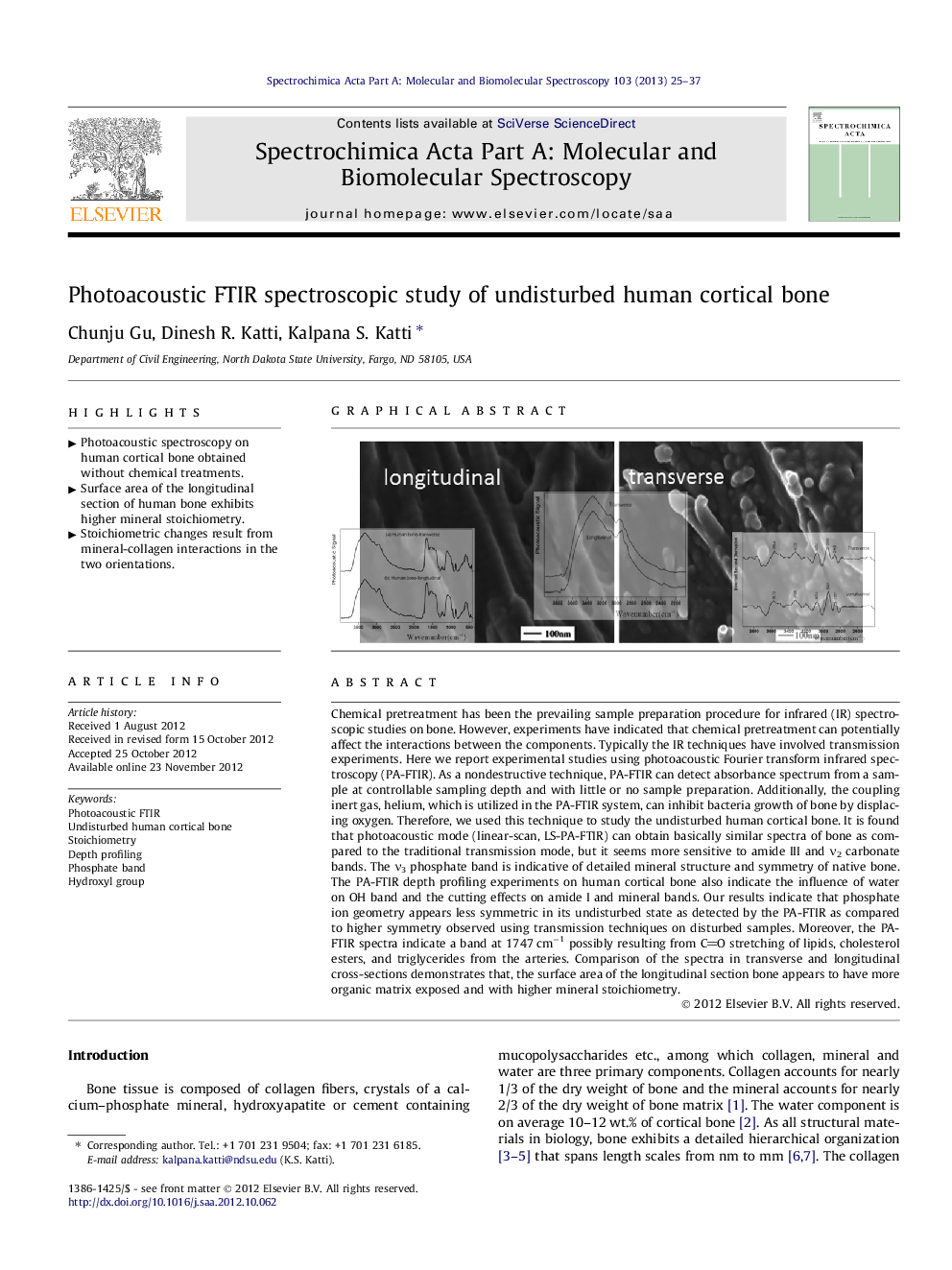| Article ID | Journal | Published Year | Pages | File Type |
|---|---|---|---|---|
| 1232024 | Spectrochimica Acta Part A: Molecular and Biomolecular Spectroscopy | 2013 | 13 Pages |
Chemical pretreatment has been the prevailing sample preparation procedure for infrared (IR) spectroscopic studies on bone. However, experiments have indicated that chemical pretreatment can potentially affect the interactions between the components. Typically the IR techniques have involved transmission experiments. Here we report experimental studies using photoacoustic Fourier transform infrared spectroscopy (PA-FTIR). As a nondestructive technique, PA-FTIR can detect absorbance spectrum from a sample at controllable sampling depth and with little or no sample preparation. Additionally, the coupling inert gas, helium, which is utilized in the PA-FTIR system, can inhibit bacteria growth of bone by displacing oxygen. Therefore, we used this technique to study the undisturbed human cortical bone. It is found that photoacoustic mode (linear-scan, LS-PA-FTIR) can obtain basically similar spectra of bone as compared to the traditional transmission mode, but it seems more sensitive to amide III and ν2 carbonate bands. The ν3 phosphate band is indicative of detailed mineral structure and symmetry of native bone. The PA-FTIR depth profiling experiments on human cortical bone also indicate the influence of water on OH band and the cutting effects on amide I and mineral bands. Our results indicate that phosphate ion geometry appears less symmetric in its undisturbed state as detected by the PA-FTIR as compared to higher symmetry observed using transmission techniques on disturbed samples. Moreover, the PA-FTIR spectra indicate a band at 1747 cm−1 possibly resulting from CO stretching of lipids, cholesterol esters, and triglycerides from the arteries. Comparison of the spectra in transverse and longitudinal cross-sections demonstrates that, the surface area of the longitudinal section bone appears to have more organic matrix exposed and with higher mineral stoichiometry.
Graphical abstractFigure optionsDownload full-size imageDownload as PowerPoint slideHighlights► Photoacoustic spectroscopy on human cortical bone obtained without chemical treatments. ► Surface area of the longitudinal section of human bone exhibits higher mineral stoichiometry. ► Stoichiometric changes result from mineral-collagen interactions in the two orientations.
